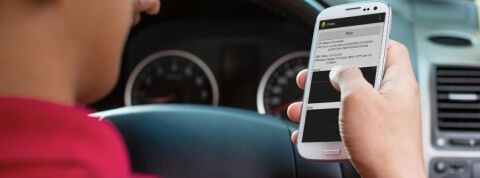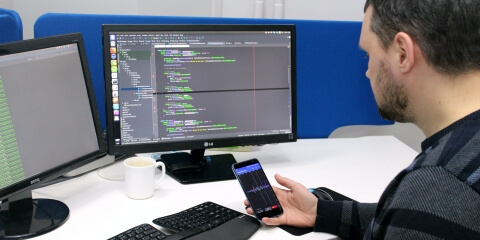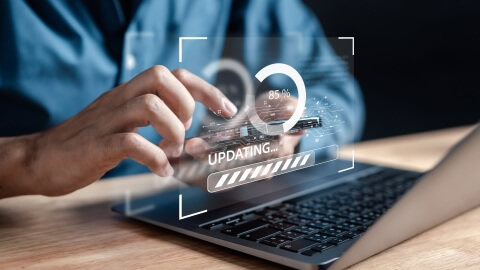When was the last time you washed your hands? Why is this important? Just look at these facts:
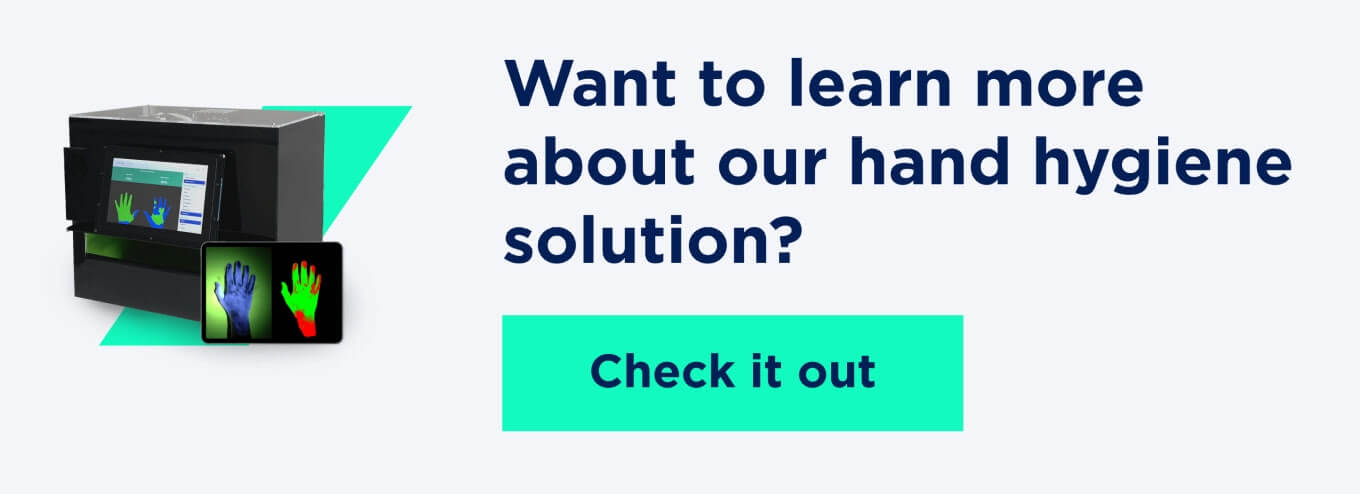
The price we pay
Hand hygiene is not just a good manner. Surprisingly, this simple habit influences us on many levels: personal, organizational and even governmental.
For people. Inability to wash hands effectively leads to spread of diseases. Washing your hands can prevent around 30% of diarrhea-related illnesses and approximately 20% of respiratory infections such as colds. 5-8 million lives a year could be saved if doctors washed hands properly.
For organizations. Typically, there are 51% fewer stomach related sick days for people who washed their hands regularly. At facilities that require employees to comply with high sanitary standards, neglecting hand hygiene may lead to contamination, loss of health or lives (medical or pharma sector), damaging of goods or livestock.
For governments. HAIs are estimated to cost the NHS £1bn per annum, and US healthcare from $28 to $33 Billion annually. Increased hand hygiene has been proven to reduce HCAI’s by 50%.
Inability to effectively and cost-effectively verify if hands have been properly washed affects business, health, and livelihoods.
Read also an article Getting Started with Activity Tracking App. Data Collection for Machine Learning Algorithm.
Market overview
There’s a number of existing solutions to monitor hand hygiene compliance, with their own advantages and limitations.
Monitoring. An employee or camera placed next to each sink on premises, to literally watch you while you’re washing your hands to confirm that you are doing it right. Not only is there a human factor so errors are probably, this also redefines the concept of a boring job. Even if live camera footage is analyzed by AI, it is still ‘event monitoring’ and does not provide data on quality of compliance.
Hand Hygiene UV light scanners — work by spraying your hands with special UV light discoverable spray, afterward washing them and finally measuring compliance by exposing hands to UV lamp. These are either mobile kiosks, printer-sized devices, or simply UV lamps. This method can only be used for training, and not for day to day monitoring because:
- kiosks or printer-sized devices are not cost effective to install next to each sink, not to mention they take up space;
- our R&D findings have validated that UV light cannot be used on its own to determine hand hygiene compliance.
In other words, under UV light there is little visible difference between very clean and moderately dirty hands.
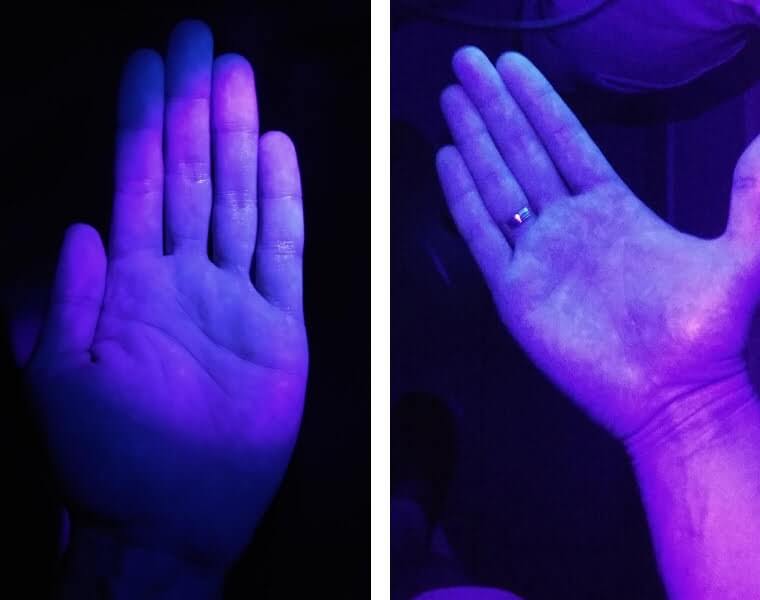
Can you guess which one is clean and which one is not? The correct answer is, they are both clean. The first on is dry, the second is wet.
Using a special spray is a different story altogether. However, it is unreasonable for, let’s say, medical staff to go spray their hands before washing them during each of the five moments for hand hygiene, then to check how well they’ve washed the spray off in a UV box.
The UV light hand hygiene compliance monitoring needs special settings like complete darkness. On the bright side, certain UV light wavelengths have bacteria-killing properties.
Product use monitoring. This uses smart handwash dispensers that detect if personnel uses soap, also detect how many of the handwashing opportunities they have fulfilled or missed. Some of the more advanced systems also track handwashing time. The hardware set for this solution includes wall-mounted sensors and a wearable device for each user.
A variation of this solution is a sniffer — a smart wearable device that detects alcohol-based hand sanitizer on hands and turns green to notify the surroundings that this user has sanitized their hands. These methods are broadly called ‘event monitoring’. The limitation is that it only monitors washing event compliance, but not the quality of hand hygiene.
The smart soap dispensers are based on the assumption that pressing the dispenser equals to washing hands. However, there are a few flaws in this theory:
- Has the soap landed on hands at all? Does not account for spillage.
- It does not account for variation in the amount of product used per individual.
- Has the recommended time been observed? (okay, one solution that also tracks overall handwashing time has that covered)
- Have all the recommended moves been thoroughly executed?
When it comes to sniffers, they do not account for the quality of using hand sanitizer — has the user covered each centimeter of hand surface, or only rubbed a little?
Check how Lemberg's data science team might help you with your project.
Hygiene observation recording — mobile applications like iScrub, SpeedyAudit, where users record their hand hygiene observations. This method is quite subjective — users usually tend to overestimate their level of compliance. Plus, your phone is swarming with germs, so using it to log a hand cleaning event is disputably effective.
Hand hygiene training system, SureWash, is in a class of its own. It consists of a mobile kiosk installed on premises to for the purpose of hand hygiene training. It goes with a mobile app with gesture recognition that detects if all the right moves have been carried out during hand washing, while also tracking time. It does not, however, monitor soap/sanitizer usage.
The gap
Dismissing the solutions used for Hand Hygiene Training as such that cannot be used on a daily basis, most approaches above fall under the group of so-called ‘event-based monitoring’.
The problem with event monitoring is that it is not providing data about the quality of hand hygiene, and without it cannot guarantee that hands are really disinfected after a hand hygiene event.
The study has found, overall hand hygiene compliance (event compliance) was quite high (86.7%), yet, hand surface coverage was inadequate for over 90% of all the health-care workers. Even perfect event-based compliance cannot guarantee to prevent the spread of health-care associated infections. It is also necessary to monitor the quality of the hand hygiene.
The solution
What if we could use the power of Artificial Intelligence to assess how effectively hands are washed. A trained neural network analyses hand washing process and scans the result to make an informed decision whether the clean hands test is passed or failed.
Benefits
For organizations. Track result, not progress. Unlike handwash dispensers that track the event-based compliance, our solution scans hands and proprietary AI technology measures the result.
Objective data. The app will record and store objective data based on AI-analysed results of scanning, not on subjective user reports.
Affordable. Compared to smart handwash dispenser ECM systems that cost $30,000-$50,000 to install.
For individual users. Simple to use. Our AI technology utilizes your phone and UV light camera.
Effective. Currently, in a prototype phase, our AI solution has proven efficiency in a variety of settings and helps drive meaningful hand hygiene compliance results. Additionally, UV light is known to kill germs.
Unobtrusive. Does not disrupt staff workflow.
No staff training required.
The state of affairs
At the moment, Lemberg Solutions’ R&D team is finalizing a working prototype for this concept. Stay tuned to read more or contact us if you have some project idea in mind!

